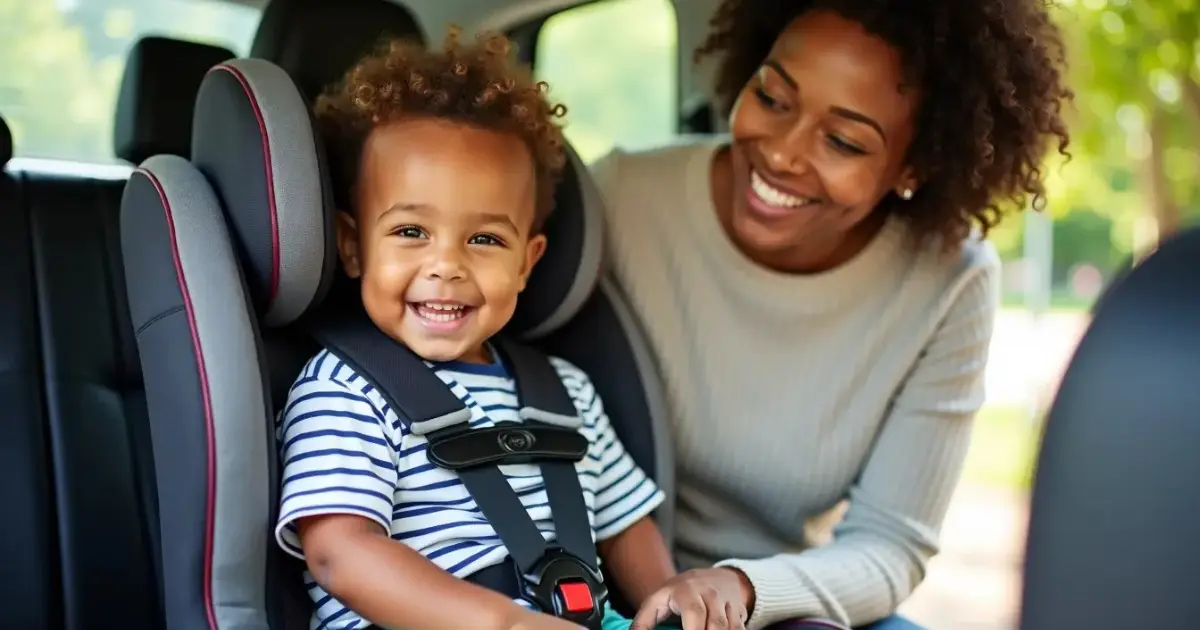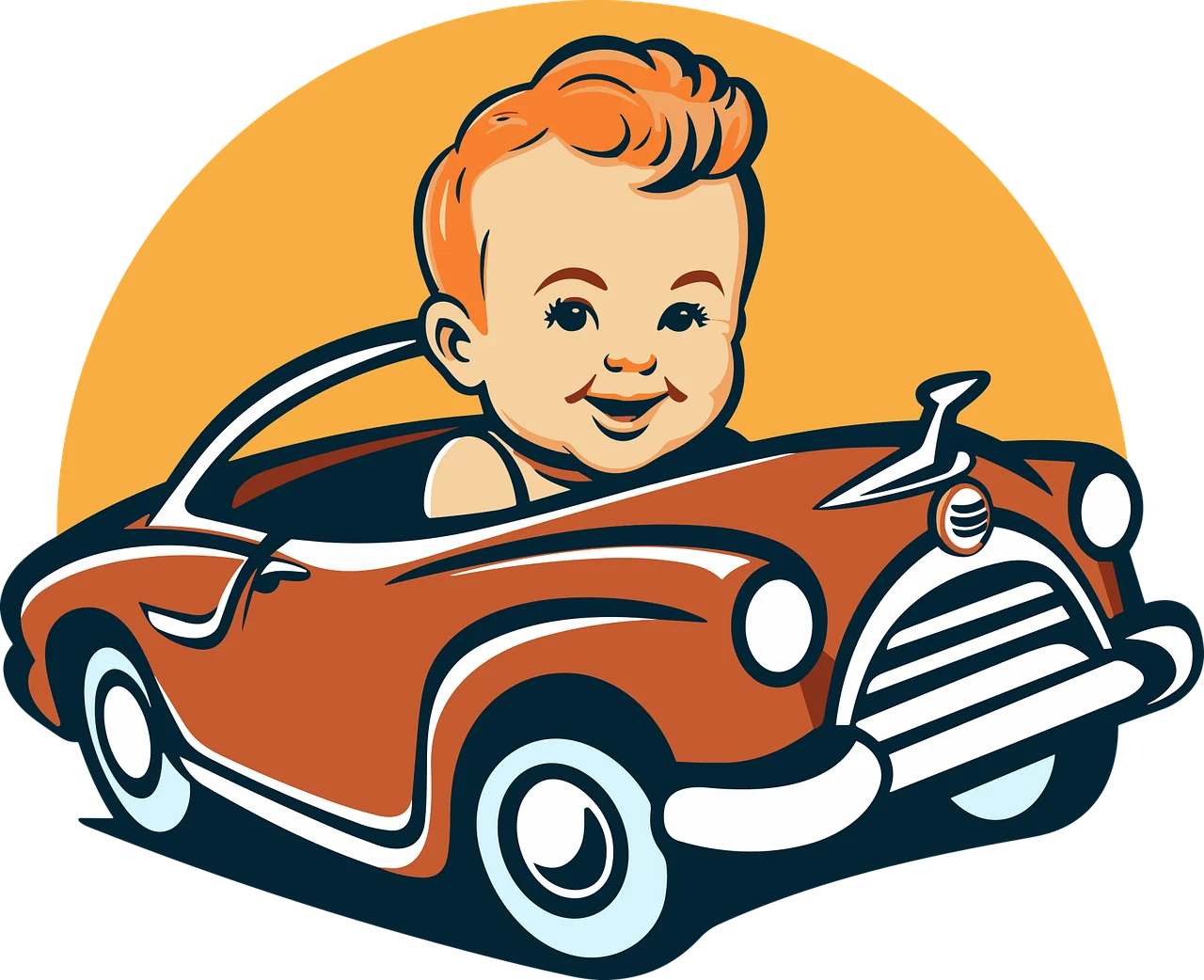Car seat safety is one of the most important tools to protect your child while driving. Car accidents are a leading cause of injury and even death for children, but using a car seat correctly can dramatically reduce the risk of serious harm.
In fact, research shows that using a car seat properly can lower the risk of fatal injury by 71% for infants and 54% for toddlers. That’s why understanding baby car seat safety is so important, selecting the right car seat, installing it correctly, and using it every single time your child is in the car can indeed be a lifesaver.
Over the years, car seats have evolved to become safer, more comfortable, and easier to use. But with so many options and guidelines out there, it’s easy to feel overwhelmed. Don’t stress, this guide will walk you through baby car seat safety tips step by step, helping you make sure your little one stays protected on every ride.
Why Car Seat Safety Matters
Car crashes are a leading cause of death for kids aged 1-13, but using a car seat the right way can make a huge difference. Studies show that proper car seat use reduces the risk of fatal injury by 71% for babies and 54% for toddlers, according to the National Highway Traffic Safety Administration. However, nearly half of all car seats are misused, which can make them less effective in a crash. Even small mistakes, like loose straps or a poorly installed seat, can put your child at risk.
Car seat laws exist in almost every country and state to protect kids, but it’s not just about following the rules it’s about keeping your child safe. Taking the time to learn how to choose, install, and use a car seat correctly is one of the best ways to protect your little one on the road.
Understanding Different Types of Car Seats
Infant Car Seats
Infant car seats are made for babies and young toddlers. They face the back of the car (rear-facing) and are designed for babies from birth until they weigh around 30-35 pounds. These seats come with a base that stays in the car and a carrier with a handle, so you can easily take your baby in and out of the car without disturbing them.
Many parents wonder when their baby will outgrow an infant seat. Most babies grow out of these seats between 9-12 months old. You’ll know it’s time to switch when your baby reaches the seat’s weight limit (usually 30-35 pounds) or when their head is less than one inch from the top of the seat. At that point, it’s time to move to a larger rear-facing seat that can accommodate their growing size.
Convertible Car Seats
Convertible car seats are designed to grow with your child, making them a great long-term choice. These seats can be used in two ways: rear-facing for babies and toddlers and forward-facing for older kids. They typically fit children up to 65-85 pounds from birth, depending on the model.
Unlike infant seats, convertible car seats don’t have a removable carrier, but they last much longer. Many parents start with an infant seat for their newborn and switch to a convertible seat once the baby outgrows the infant seat. This makes convertible seats a practical and cost-effective option for keeping your child safe as they grow. Just make sure to follow the seat’s instructions for proper installation and use.
All-in-One and 3-in-1 Car Seats
All-in-one and 3-in-1 car seats are designed to grow with your child from birth until they no longer need a car seat (usually around 10-12 years old). These seats can change from rear-facing for babies to forward-facing for toddlers and finally to a booster seat for older kids. Some newer models even rotate, making it easier to put your child in and out without reinstalling the seat—these are often called “360” car seats.
The best part? These seats save money because you only need one instead of buying multiple seats as your child grows.
Booster car Seats
Booster seats are an important step to keep older kids safe in the car. Once your child outgrows their forward-facing seat (usually around 4-7 years old), they’ll need a booster seat. Boosters lift your child so the car’s seat belt fits correctly across their chest and lap, not their neck or stomach. Kids usually use boosters until they’re 8-12 years old or tall enough (around 4’9″) for the seat belt to fit correctly without one.
There are two types: high-back boosters, which offer head and neck support, and backless boosters, which are easier to move around. Always make sure the seat belt fits snugly and that your child sits properly in the booster for the best protection.
Choosing the Right Car Trend Seat for Your Baby
Choosing the right car seat depends on your child’s age, size, and your car. Here’s what to think about:
Age and Size for Baby Car Seat
- Babies and toddlers up to at least 2 years: Use rear-facing seats. It’s safest to keep kids rear-facing until they reach the seat’s height or weight limit, which could be until 3-4 years old. For example, the Baby Trend car seat has rear-facing options that are safe and comfy for little ones.
- Toddlers and preschoolers: Once they outgrow rear-facing seats, switch to forward-facing seats with harnesses. These usually work for kids up to age four or older, depending on the seat’s weight limit (often 65 pounds or more).
- School-aged kids: Use booster seats until they’re tall enough (usually 4’9″) for the car’s seat belt to fit correctly on its own.
Will It Fit in Your Car?
Not all car seats fit every car. Some are too big for smaller cars, and some vehicles have seats that make installation tricky. Test the seat in your car before buying, or check if you can return it if it doesn’t fit. The Baby Trend car seat is designed to fit most vehicles, but it’s always good to double-check. If you have more than one child, make sure the seats can fit side-by-side in your back seat.
Your Lifestyle
- If you switch cars often or use rideshares, pick a lightweight, portable seat.
- For frequent flyers, choose a seat approved for airplane use and easy to carry.
- If you have limited space or use buses or trains often, think about the seat’s size and weight. keeping your child safe in different weather conditions, For more tips Weather Safety for Kids.
Baby Trend Car Seat Safety in the U.S.
All car seats sold in the U.S. meet safety standards, but some have extra features like side-impact protection, energy-absorbing foam, or steel frames for added safety. For Baby Trend car seat safety, always follow the instructions for proper installation and use. Make sure the harness straps are snug, and the chest clip is at armpit level.
Check Safety Approvals and Expiration Dates
- Look for a sticker showing that the seat meets U.S. safety standards.
- Check the expiration date (usually 6-10 years after it’s made).
- Register your seat with the manufacturer to get recall alerts.
- Avoid used seats unless you’re sure they’ve never been in a crash, aren’t expired, and have all original parts.
How to Install Baby Car Seats Correctly
Installing a car seat the right way is key to keeping your child safe. If it’s not done correctly, it won’t protect your child well in a crash. Here’s how to do it:
LATCH System vs. Seat Belt Installation
Most cars made after 2002 have a system called LATCH (Lower Anchors and Tethers for Children). It uses metal bars in the seat crack and anchor points behind the seat to make installing a car seat easier. You can use either LATCH or the seat belt both are safe if done right. But LATCH has weight limits (usually around 65 pounds, including the child and car seat). Once your child reaches that limit, switch to using the seat belt.
How to Install a Baby Trend Car Seat
Rear-Facing Installation
- Pick the safest spot in your car (usually the middle of the back seat).
- Make sure the seat is at the right angle. Many seats, like the Baby Trend car seat, have built-in indicators to help you check the angle.
- Attach the seat using LATCH connectors or the seat belt, following the correct path marked on the seat.
- If using a seat belt, make sure it’s locked (check your car’s manual for how to do this).
- Push down hard on the seat while tightening. A properly installed seat shouldn’t move more than 1 inch side-to-side or front-to-back.
- For convertible seats, make sure the harness straps are at or below your child’s shoulders when rear-facing.
Forward Facing Installation
- Always use the top tether strap along with LATCH or the seat belt.
- Put the seat belt or LATCH strap through the forward-facing belt path.
- Lock the seat belt if that’s how you’re installing it.
- Make sure the car seat sits flat against the vehicle seat back.
- Tighten everything until the seat doesn’t move more than 1 inch when you test it at the belt path.
- Position the harness straps at or above your child’s shoulders.
Common Installation Mistakes to Avoid
- Use both the LATCH and seat belt together (unless the manufacturer says it’s okay).
- Forgetting the top tether for forward-facing seats.
- Having the wrong angle, especially for babies.
- Putting seat belts through the wrong path.
- Not locking the seat belt.
- Installing a rear-facing seat in front of an active airbag.
- Is the seat tight enough?
Getting Help
If you’re unsure about your installation, get help from a Child Passenger Safety Technician. Many fire stations, hospitals, and police stations offer free car seat checks. For Baby car seat safety, always follow the instructions and double-check your work to keep your child safe.
Putting Your Child in the Car Seat Correctly
Harness Height:
For rear-facing seats: Put the straps at or below your child’s shoulders.
For forward-facing seats, Put the straps at or above your child’s shoulders.
Chest Clip Position:
The chest clip should be at the armpit level. If it’s too low, the straps won’t stay in place. If it’s too high, it could hurt your child’s neck in a crash.
Checking Harness Tightness:
After buckling your child in, try to pinch the strap at their shoulder. If you can pinch extra material, it’s too loose.
Winter Coats and Bulky Clothes:
Thick coats and bulky clothes can flatten in a crash, making the harness too loose. Instead:
- Take off bulky coats before buckling your child in.
- Buckle them in with the harness.
- Put blankets or coats over the harness (never under) to keep them warm.
- For older kids, put their coats on backward after buckling.
Rear Facing vs. Forward Facing Guidelines
The American Academy of Pediatrics recommends keeping children rear-facing until they reach the maximum height or weight limit for the rear-facing position of their car seat. Here’s why this position is so important:
How Long to Keep Your Child Rear-Facing
Keep your child rear-facing until they reach the seat’s weight or height limit, usually 40-50 pounds or until their head is within 1 inch of the seat’s top. Most kids can stay rear-facing until age 3-4.
When to Switch to Forward-Facing
Only switch to forward-facing when your child outgrows the rear-facing limits of their seat. Check the car seat manual for exact measurements. Don’t rush this change just because of their age.
Why Rear Facing Is Safer
Rear-facing seats protect your child’s head, neck, and spine by spreading crash forces across their back, the most substantial part of their body. Young kids have heavy heads and weak necks, making rear-facing much safer. Studies show fewer injuries in rear-facing kids.
Regular Maintenance and Safety Checks
Cleaning Instructions
- Harness straps: Wipe with mild soap and water. Never soak or use harsh chemicals.
- Buckles: Rinse with warm water only to prevent residue buildup.
- Seat covers: Check the manual many are machine washable but should be air-dried.
- Plastic parts: Clean with mild soap and water.
Looking for Damage
Check your seat often for worn straps, cracks in the plastic, rusty metal parts, or loose pieces. Please make sure the buckles click properly when you test them.
Understanding Expiration Dates
Car seats usually expire 6-10 years after they’re made because the plastic can break down, parts wear out, and safety rules change. Look for the date stamped on the seat.
Traveling Safely with Your Baby Trend Car Seat
Using Car Seats on Airplanes
Most car seats can be used on planes (look for “certified for use in aircraft” on the label). Using a car seat on a plane keeps your child safer during bumpy flights.
Car Seat in Rental Cars
Ask about LATCH hooks when you book a rental car. Bring your manual and give yourself extra time to install the seat in a car you’re not used to.
Travel-Friendly Features to Look For
Look for lightweight seats (under 20 pounds), narrow ones that fit on plane seats, and seats that are easy to install quickly. Some parents buy a special travel car seat that’s easier to carry.
Final Thoughts
Your child’s car seat keeps them safe in the car. Keep babies facing backward as long as possible. Make sure the seat is installed correctly, and the harness fits right every time. Check your seat regularly for wear and follow the manufacturer’s care instructions.






